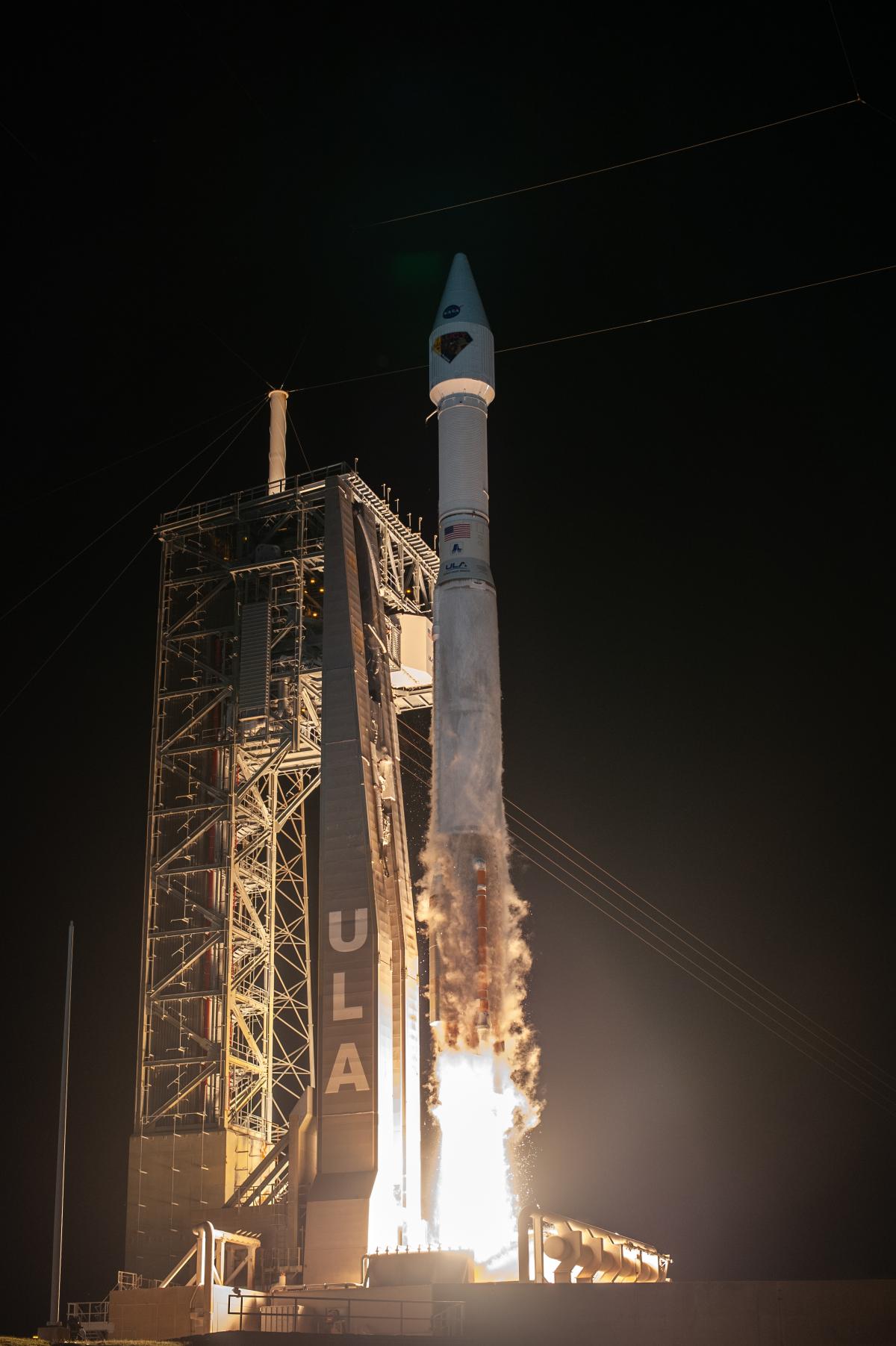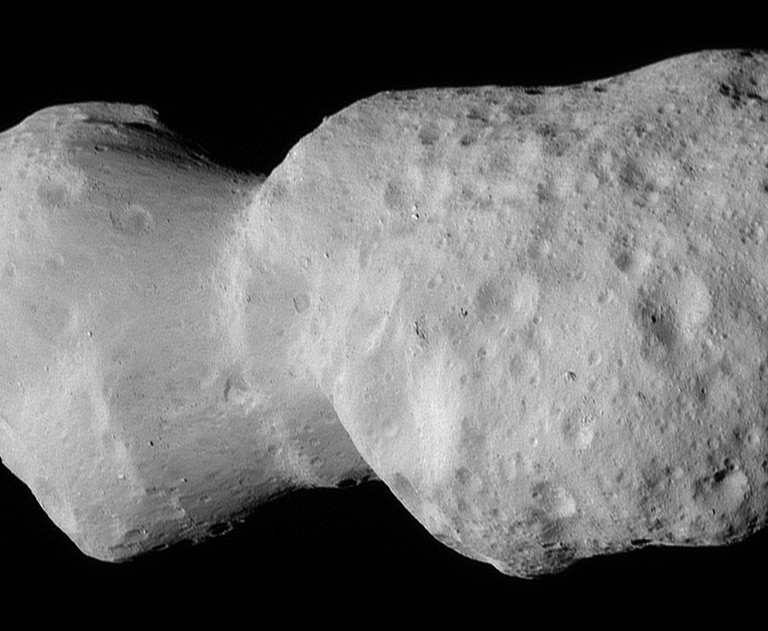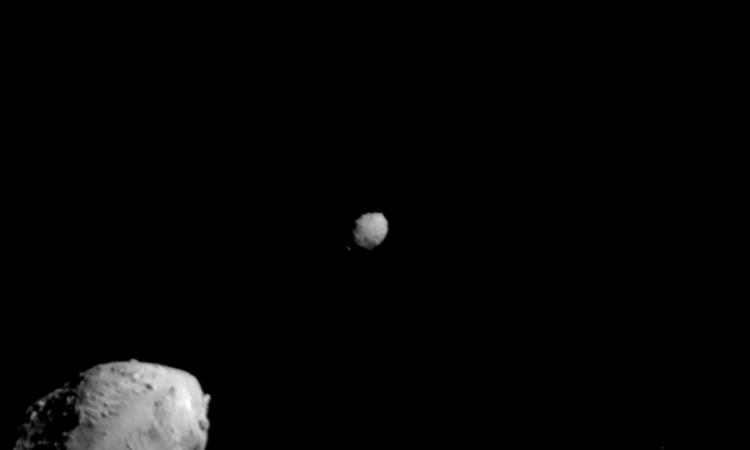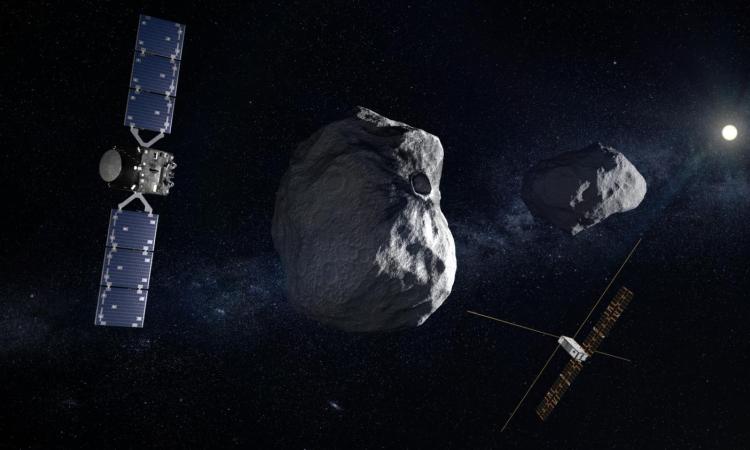Masatoshi Hirabayashi will utilize data from ancient asteroids to gain a deeper understanding of the history of space.
What secrets lie in the universe’s fossils? NASA’s Lucy mission has the potential to make groundbreaking discoveries about the solar system’s start. By studying ancient asteroids, NASA scientists expect to uncover clues about the conditions that led to the formation of the solar system.
The Lucy spacecraft launched on October 16, 2021, embarking on a 12-year journey to explore several asteroids during flybys or when the spacecraft flies by the three main belt asteroids and eight Trojan asteroids. Lucy, named after one of the most significant 3.2-million-year-old ancient, fossilized skeletons, embodies the mission's aim to discover the "fossils" of planetary formation.
In February, NASA selected eight participating scientists to join its Lucy mission, including Daniel Guggenheim School of Aerospace Engineering Associate Professor Masatoshi Hirabayashi. The team will explore the Jupiter Trojan asteroids using highly specialized cameras to capture these ancient celestial bodies considered "fossils" of the solar system because they have remained relatively unchanged since their formation. These asteroids share Jupiter's orbit around the Sun, called the Sun-Jupiter Lagrange points, L4 and L5. Hirabayashi will support investigations of Lucy’s targets around L4.
Lucy’s Scientific Instruments
Lucy is equipped with a suite of advanced scientific instruments that make this research possible. The Lucy Long Range Reconnaissance Imager (L’LORRI), a black and white camera, will capture high-resolution images of the targeted asteroids. The Terminal Tracking Camera (TTCAM) will ensure precise navigation and tracking of the asteroids during the mission. Lucy’s Thermal Emission Spectrometer (L'TES) will detect the infrared radiation. The L’Ralph instrument, a visible/near infrared multi-spectral imager and a short wavelength infrared hyperspectral imager, will collect data from the Trojan asteroids’ surface for organic compounds, ices, and other minerals to determine their surface makeup.
Investigating the Data
Hirabayashi will support Lucy’s science operations and investigations by analyzing instrument data including three-dimensional topography about the asteroids’ surfaces. He will apply such data to gain insights into the asteroids’ interiors. His expertise in interior analysis is particularly valuable for the mission. Hirabayashi played an essential role in NASA’s DART mission, and he is currently supporting the European Space Agency’s HERA mission, studying the binary asteroid Didymos. He is particularly interested in understanding whether the environment of these asteroids was favorable for the formation of life, which closely ties up with Georgia Tech’s efforts in astrobiology (https://astrobiology.gatech.edu/). Based on his findings, his dream is to develop and support future interplanetary large-scale missions to further solar system exploration.

Photographer: NASA/Kevin O'Connell and Bob Lau
A United Launch Alliance V 401 rocket, with NASA’s Lucy spacecraft atop, powers off the pad at Cape Canaveral Space Force Station’s Space Launch Complex 41 in Florida at 5:34 a.m. EDT on Saturday, Oct. 16, 2021. The launch was managed by NASA’s Launch Services Program, based at Kennedy Space Center. Lucy will embark on a 12-year primary mission to explore a record-breaking number of asteroids, including the Jupiter Trojan asteroids. Named after a fossilized human ancestor whose skeleton provided discoverers insight into humanity’s evolution, the Lucy mission will do much of the same, providing scientists and researchers a look into the origins of our solar system.Asteroid Visits and Timeline
The mission will visit four asteroid systems whose names are derived from Greek mythology in the L4 Sun-Jupiter Lagrange point. Two of these systems are binary, meaning they consist of a large asteroid and a smaller satellite asteroid. Key flyby dates include:
- August 12, 2027: Visit to Eurybates and Queta
- September 15, 2027: Visit to Polymele
- April 18, 2028: Visit to Leucus
- November 11, 2028: Visit to Orus
One of the primary operational complexities they anticipate involves aiming the instruments at the asteroids. Lucy must navigate autonomously, making real-time decisions to ensure the instruments are correctly oriented. This requires sophisticated navigation, control, and guidance systems. From a data standpoint, they will have a finite number of images from which to theorize.
“There are a lot of unknowns, and getting information from very limited data or few images for analysis will be challenging,” he said.

Donaldjohanson Asteroid
On April 20, Lucy did a flyby to capture high-resolution photos of the asteroid Donaldjohanson, which was believed to have formed 150 million years ago. Lucy continuously captured images while passing by the asteroid, eventually reaching about 600 miles from it.
These asteroid visits will provide a wealth of data for the Lucy team to explore. Hirabayashi is supporting the team by better understanding the asteroid’s surface and interior environments, the process of which will be directly applied to Lucy’s Trojan targets.
“Donaldjohanson is our practice target. I am using this opportunity to test how my expertise contributes to the team and getting ready for our real targets at L4,” he said.
Related Stories:

AE Professor Masatoshi Hirabayashi Studies Compelling Way to Deflect Asteroids From Earth
Georgia Tech Professor Masatoshi Hirabayashi’s critical contribution to DART was recently published in Nature Communications. The study, “Elliptical ejecta of asteroid Dimorphos is due to its surface curvature” analyzed the behavior of fragments coming out by the high-speed DART impact and their push of the asteroid.

Hirabayashi Chosen by NASA to Join European Space Agency’s Planetary Mission to Study Results of Asteroid Deflection
Masatoshi (Toshi) Hirabayashi, an associate professor in the Daniel Guggenheim School of Aerospace Engineering, has been selected by NASA’s Hera Participating Scientist Program (HERA-PSP) to join the European Space Agency’s (ESA) Hera mission. Together, with an international consortium of 11 other scientists, Hirabayashi will perform a multi-faceted, detailed, post-impact study of NASA’s Double Asteroid Redirection Test (DART) mission. The DART mission was led by the Johns Hopkins University’s Applied Physics Laboratory.
(text and background only visible when logged in)
